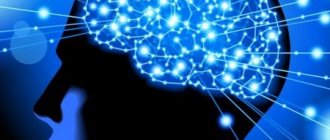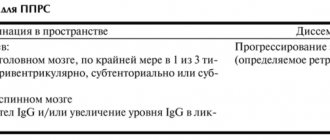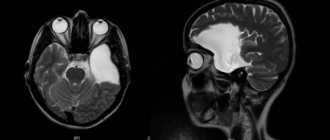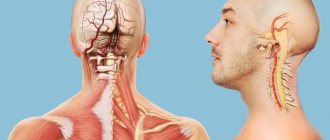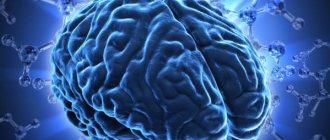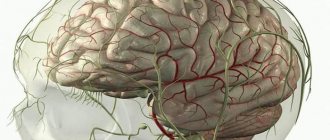For a long time it was believed that sleep is a passive state when the brain “turns off.” However, recent studies have shown that this is an active process during which large changes occur in brain activity, which, in turn, leads to a decrease in responsiveness to environmental stimuli and the emergence of specific mental activity - man sees dreams. However, even in deep sleep, consciousness is not completely separated from the external world. Changes in body position provide adaptation to conditions and the size of space. Thanks to this, we do not fall out of bed, even when constantly moving. Does the brain work during sleep? Does he really need a night's rest? Let's get a look.
The biological clock does not go astray
Nathaniel Kleitman, an American scientist (by the way, an immigrant from Russia) who studied sleep, once spent a whole month in an underground cave in the hope of finding out what was happening with the human biological clock. He assumed that if he did not see sunlight, sunrises and sunsets, they would get confused - and the cycle would either shorten to 21 hours or increase to 28. To his surprise, this did not happen. Our biological clock is always accurate: one sleep-wake cycle lasts 24–25 hours.
In the kingdom of Morpheus. Interesting facts about sleep and dreams
More details
The phenomenon of hypnopaedia
Due to the increasing flow of information, interest in the phenomenon of hypnopaedia – learning during physiological sleep – is growing. Advertisers' suggestion that they wake up in the morning with a good amount of knowledge is tempting. We will not enter into an argument with either opponents or followers of this method; we will only recall a few recommendations:
- The need for mandatory work on mastering the material during the waking period.
- It is strictly forbidden to practice hypnopedia on your own - this can cause mental disorders.
- Compliance with the regime.
For complete assimilation, it is important that the brain has time to go through the required number of cycles. With insufficient sleep, a person risks getting daytime sleepiness rather than fresh knowledge.
Sleep deprivation is deadly
In the 20th century, a genetic disease called “fatal familial insomnia” was discovered: it caused the death of members of more than 30 families around the world. The symptoms are the same. At first, people stopped sleeping - it simply didn’t work, then the pulse quickened and the pressure increased, in the next phase the patients could not speak, stand or walk. It all ended in a couple of months: before death, people fell into a state similar to a coma and died. As a rule, the disease affects middle-aged people and sometimes teenagers.
Article on the topic
How to fall asleep correctly so that you are alert in the morning. Advice from a somnologist
Brain pathologies: impact on sleep quality
Any illness negatively affects the quality of sleep. In turn, dyssomnias are risk factors for somatic diseases - hypertension, diabetes, cancer, thyroid lesions, obesity.
Brain diseases - neoplasms, cysts, epilepsy, inflammation of the meninges, trauma and cerebrovascular pathology cause disturbances in memory, motor and speech functions. They not only cause problems falling asleep, but also contribute to changes in sleep structure.
A dream is a rehearsal
Scientists are increasingly inclined to believe that the biological significance of sleep is to ensure the survival of the species, be it rat or human. In our dreams, we practice avoiding danger (which seems to be what dreams with threatening content are for), such as swimming across a river or running away from a dangerous animal. But thanks to the special state in sleep, in which our muscles are almost immobilized, all this rehearsal occurs at the level of the brain. Thus, we learn ways to save our lives in a dream so that someday we can use them in real life.
The work of the subconscious: how dreams help solve problems and identify diseases
More details
Sleep phases and brain activity
In 1930, scientists discovered that the electrical activity of neurons is very different during wakefulness (fast activity) and after falling asleep (slow activity).
- Phase 1 – falling asleep. This stage is characterized by progressive psychological relaxation, muscle relaxation, and slowing of the heart rate.
- Phase 2 – shallow. At this stage, a person can be awakened by the slightest stimuli (light touch, sound). When awakening at this stage, a person can be sure that he did not sleep at all.
- Phase 3 and 4 are deep. This is the deepest sleep, when the muscles are completely relaxed, breathing is slow, heart rate, blood pressure, and body temperature are reduced. The quality and quantity of phases 3-4 have a decisive influence on the feeling of freshness after waking up.
- REM phase. About 1-2 hours after falling asleep, a significant change in brain activity occurs, similar to the waking state. Physiological stimulation of the whole organism occurs. Heart rate and blood pressure become irregular, oxygen consumption increases, and breathing speeds up. Nevertheless, the person is sleeping, moreover, he is relaxed. The eyes behind closed eyelids move quickly and irregularly, the person is dreaming. When awakening at this stage, 80% of people have vivid dreams.
Sleep improves learning abilities
All stages of sleep are associated with learning: the stronger the brain activity during sleep, the better the ability to learn new things. The light sleep stage has been found to be responsible for the development of new skills in musicians, dancers and athletes. It is interesting that this does not happen immediately, but a day or two after the first training and memorization of a play, dance or movement. And during slow-wave sleep, factual information is well remembered: for example, dates from a history textbook.
* Andrea Roca's book "The Brain in Sleep" is provided by Mann, Ivanov and Ferber.
Getting to know the structure of sleep
Adequate rest is ensured by consistent alternation of slow and fast sleep. A complex of both phases is a complete cycle. The orthodox phase in an adult accounts for up to 75%, and the paradoxical phase makes up a quarter of the sleep structure. During the night there can be a successive change of four to six cycles lasting from eighty to one hundred minutes.
The duration of the slow-wave phase is initially longer, but by the time of awakening it shortens, giving way to REM sleep. The Orthodox phase is divided into four periods (scientists call them stages) - dormancy, slow depth, ri, delta waves. The REM phase is also heterogeneous, including emotional and non-emotional stages.
Doctors' opinion
Experts say that night rest is very important for a person, and dreams allow you to saturate the body with positive emotions and impressions. It's no secret that the brain is capable of performing a variety of functions. The most important of these is detoxification, for which the glymphatic system is responsible. During sleep, its activity increases tenfold. During this time, protein compounds are released that can prevent diseases such as Parkinson's syndrome or Alzheimer's syndrome. Doctors say that the organ spends a lot of energy on this process.
Before going to bed, doctors recommend learning to turn off brain activity. This requires adherence to a specific and constant schedule, as well as the creation of the necessary atmosphere (for example, lights off and complete silence). It is also recommended to use the bed only for sleeping, and you can read a book before going to bed.
Brain functioning in the fast phase
Brain function changes dramatically during REM sleep. Experts have recorded that the level of neural oscillations largely replicates the level of oscillations during wakefulness. The temperature rises and the pressure stabilizes. It is in this phase that dreams are born.
An organic compound called acetylcholine helps excite the thalamus. The active activity of cells causes a burst of neurons to appear, and work is again performed in the gray matter, as during wakefulness. The duration of the fast phase becomes longer in the morning.
Job
As you already know, at night the body sleeps, but the brain continues to work. During these hours, he processes information received not only during the day, but also accumulated over his entire life. Its individual parts are assembled into the main picture and sold to analysis.
The human gray matter, when falling asleep, continues to make decisions and systematize words. Work on their classification continues even during dormancy. Memories are also distributed. All new ones received during the day are associated with the old ones. Memory is sorted, work is done so that a person remembers the necessary moments.
After rest, information is better absorbed and the world around us is perceived. Since the brain does not turn off during sleep, original ideas are not spontaneity, they are associations built by it.
It has been proven that during the fast phase, information about physical activity is transmitted from the cerebral cortex, which is responsible for motor skills, to the temporal cortex. This process helps improve physical performance.
Research data from the University of Wisconsin
Scientists conducted another major study. 46 volunteers were selected to participate in the experiment. During rest, subjects were attached to an electroencephalograph to monitor changes in electrical impulses. At the same time, sleep was torn, since the participants in the experiment were periodically woken up.
People talked about what they were dreaming at the moment. Their stories were compared with the electrical impulses. The study showed that during the rest period, work in a separate part of the cortex responsible for the appearance of dreams decreases. On the contrary, in the absence of visions, activity increases. When the volunteers talked about what they saw, the neural areas worked more actively.
The experiment showed that sleep regulation depends on the following departments:
- occipital cortex;
- precuneus;
- posterior cingulate cortex.
What conclusion can be drawn
Thus, we studied how the human brain works during sleep, how much energy it consumes, and in what mode it functions as soon as we fall asleep. Our “gray matter” is the object of observation and debate by many scientists. When we are in the arms of Morpheus, he begins his work, unknown to us, solving a large number of problems. During wakefulness, it is also active, but acts in other directions. The human brain is a complex structure that requires detailed study and research.
| Share: |
Similar materials
Impact of shortages
Everyone knows that lack of sleep is harmful to human health. With its chronic shortage, the body is more susceptible to diseases and metabolic disorders. The psyche also suffers.
Insufficient rest provokes an acceleration of the aging process of the body. The brain also ages, and premature sclerosis is possible. In the frontal cortex of the organ, blood circulation is disrupted, making it more difficult to build logical chains.
With a lack of rest, excessive irritability and aggression appear. Such a person is more susceptible to stress, and the development of psychological diseases is possible.
If the regime is violated, accumulated toxins are not removed from the brain organ. With chronic lack of sleep, a person becomes psychologically unstable.
How the brain works during sleep: new scientific discoveries
If we so need daily night rest, then why does the brain not stop functioning even at night?
More recently, scientists have found out [Verified source] that during orthodox sleep, the central part of the nervous system removes toxic substances. During night or daytime rest, protein synthesis occurs in the brain, and the byproducts of this process, along with cell waste, are eliminated from the body.
First, they enter the intercellular space, after which they descend through special channels (the glymphatic system) into the cerebrospinal fluid, and then enter the liver, kidneys and are completely eliminated from the body through the excretory system.
From the above we can conclude why the brain does not sleep and what is the main purpose of sleep. It lies in the ability to remove processed waste products of its cells. If you delay this process, then such toxic substances will accumulate, and malfunctions will begin to occur in the functioning of the entire body.
In addition, ions contained in the channels of the glymphatic system take part in the transition from wakefulness to sleep and back. When a large number of potassium ions collect in the intercellular fluid, and the concentration of magnesium and calcium decreases, a person wakes up. Thus, some functions of sleep are directly related to maintaining electrolyte balance.
Another interesting statement in somnology (the science of dreams) is that almost every person dreams, and some of them even pose a threat to his body.
Which part of the brain is responsible for dreams?
The part of the brain responsible for dreams is the gray matter. It was of great interest to many scientists. Scientists such as Aristotle and Hippocrates tried to understand dreams, and a little later Russian scientists Pavlov and Bekhterev studied this.
The central nervous system has a special department that is responsible for a person’s rest and wakefulness. This special area looks like a web of a large number of nerve cells that are intertwined with nerve fibers that pass through the sensitive areas of the organ.
Gray matter contains three types of nerve cells. They are responsible for various biologically active elements. Serotonin is considered one of these elements. Scientists prove that it is thanks to this active element that dreams arise due to changes in the brain.
Actions in the brain, such as stopping the production of serotonin, can lead to insomnia, which becomes chronic. This is what proved that the center area can be responsible not only for rest at night, but also for awakening.
Sleep disorders: what they mean
Individual responses to sleep deprivation can vary markedly from person to person. However, in the same person these manifestations are more or less similar.
Physiology for disorders
In the absence of sleep, the regulation of the circadian rhythm is disrupted. This is due to the fact that melatonin, which is one of the main regulators of the circadian cycle, is synthesized mainly at night, and in a person who “skips” the night, this synthesis does not occur in full. In addition, sleep deprivation suppresses the activity of the prefrontal and parietal areas of the brain and the thalamus.
The prefrontal cortex plays a major role in regulating sleepiness. After 35 hours of continuous wakefulness, the activity of the temporal cortex begins to decrease. The response of this cortex to verbal learning in sleep-deprived people differs from the norm. Lack of sleep also changes the composition of neuronal receptors on the cell surface: the number of dopamine receptors decreases, and the number of serotonin receptors increases. And although lack of sleep has virtually no effect on memory capacity, it seriously slows down the reaction speed.
Genetic factors
- One of the most common disorders is the ability to fall asleep only in the morning. This condition is characterized by an extended circadian rhythm, when the individual “internal day” stretches to 25 hours or more. The disorder is characterized by polymorphism affecting the number of repeats in the PER3 gene - a connection with the 3111C CLOCK allele.
- The opposite violation occurs when a person falls asleep much earlier than the conventional norm and his “internal day” is compressed to 23 hours. The disorder is caused by a mutation in the PER2 gene.
- Mutations in the allele of the protein gene (HLA) DQB1*0602, the major histocompatibility complex, are also associated with sleep disorders, found in 15-35% of healthy people who tolerate partial sleep deprivation worse than others.
Sleep disorders
The importance of sleep in maintaining life has already been illustrated by the consequences of “fatal familial insomnia.” But there are other pathologies.
- Behavioral deviations . This disorder is characterized by involuntary movements of the arms and/or legs, which often occur during the transition between phases or during the REM stage of sleep, resulting in the feeling that the person is physically participating in his dream. This abnormality is often observed in people with Parkinson's disease, which dictates the appropriate treatment.
- Apnea syndrome (stopping breathing movements). It occurs during deep sleep, when the muscles of the pharynx relax so much that they block breathing, causing sleep to be immediately interrupted.
- Narcolepsy . With this disease, which affects 1 person per 2.5 thousand population, the mechanisms that regulate the transition to the “fast” stage are disrupted. A person may suddenly fall asleep on the go, especially during monotonous work.
Another characteristic manifestation of narcolepsy is cataplexy, an involuntary and unexpected relaxation of the body muscles that occurs at the moment of intense emotional experiences (rage, joy, sexual pleasure, significant memories, etc.). Often, before falling when relaxing the muscles, a person manages to consciously choose the place where he will fall.
Associated symptoms of narcolepsy include:
- “paralysis” after awakening, in which a person remains for a few seconds after waking up,
- vivid dreams, sometimes turning into hallucinations, at the moments of falling asleep and waking up,
- pronounced need for daytime sleep.
Depression and sleep disorders
Sleep disturbances can be both a symptom of depression and its cause. With depression, a person takes longer to fall asleep, often wakes up during the night, and sleep becomes superficial. Phases 1 and 2 lengthen and phases 3 and 4 shorten. In severe cases, these last two phases of the deepest sleep may be absent altogether. Because of this, people suffering from depression do not get enough sleep, regardless of how long they sleep. The transition between phases in a state of depression occurs more abruptly.
Violations of the paradoxical stage are even more common. A person with depression very abruptly goes into a state of wakefulness. The “fast” stage, starting from the first cycle, occurs much earlier. In contrast to the normal course, the depressive type of the cycle manifests itself in the form of an extension of the paradoxical stage not in the second, but in the first half of the night.
After overcoming depression, sleep usually returns to normal, but this does not always happen immediately. Sometimes pathological manifestations appear within six months. In cases where depression leads to sleep disturbances (and this happens in 9 out of 10 cases), drugs that stabilize the emotional state are used. Often, in order not to aggravate the situation under stressful circumstances, in conditions of impending depression or for a smooth exit from it, “gently” acting natural plant complexes are used, which:
- normalize sleep,
- relieve depression, fears and anxiety,
- improve the emotional background.
We are talking about drugs such as HeadBuster, BrainRush and the like. Simultaneously with emotional stabilization, these complexes enhance mental activity and help improve memory and attention. Brain activity improves simultaneously with the improvement of the condition of brain tissue and signal conduction in neural networks. The action of these drugs is based on the quantitative principle of gradual accumulation of the active substance throughout the entire recommended course, which determines the safety of the drugs. Depending on the individual characteristics of the body, the first results become noticeable after one to two weeks of use. Each element is selected so that it enhances the effect of other components of the product.
Lucid dreams: how they arise and how they can be dangerous
Everything we see in a dream can be divided into unconscious and lucid dreams. In the first case, a person cannot distinguish between a dream, perceiving the dream as a reality that he is not able to influence. In the second situation, during a lucid dream, he realizes that he is not in reality, but in a dream, so he can control his actions.
A recent survey found that 55% of adults [Verified Source] have had a lucid dream at least once in their lives, and 23% of respondents experience lucid dreams at least once a month.
During this type of rest, the level of activity in the prefrontal cortex increases and reaches the same level as during wakefulness. For this reason, lucid dreaming can be called a “hybrid state of sleep and wakefulness.”
Today, many scientists agree that some lucid dreams flow into unconscious ones. In this sense, lucidity is an aspect of dreams that can be induced in a variety of ways. For example, waking up in the middle of the night, and then after a certain time returning to bed, or turning on external stimuli (lights, music) during REM sleep.
As for frequent lucid dreaming, it has both negative and positive sides. This type of dream blurs the boundaries between dreams and reality, which can have negative consequences for a person's mental health. He may begin to think that what happened in a dream really happened in reality, or deliberately provoke such a state in himself every night.
There is a scientific opinion [Verified source] that lucid dreams cause poor quality sleep because they are accompanied by increased brain activity and can disrupt the sleeper's rest-wake cycle. It can affect long-term memory, emotional regulation, and other aspects of daily life.
However, lucid dreams also have positive aspects. During them, people can fight fears, which will then be easier for them to cope with in real life or regulate nightmares by treating them with this method.
Doctors recommend not to provoke lucid dreams on your own, as this can lead to the loss of the fine line between sleep and reality.
Remember, any person needs daily sleep with a minimum duration of 7 hours, because it is during this time that all toxic products of its vital activity are removed from the brain, which contributes to the normal functioning of the entire body.
If headaches, and especially migraines, are preventing you from falling asleep, then it’s time to think about treating it. Read our latest article on how to choose pills for migraines and how they differ from headaches .
Can a lack of vitamin D affect our sleep? Find out in the new material the whole truth about vitamin D and its connection with immunity, coronavirus and what threatens us with a lack of the “sun vitamin” .
apteka24.ua is the first online pharmacy you can trust.


